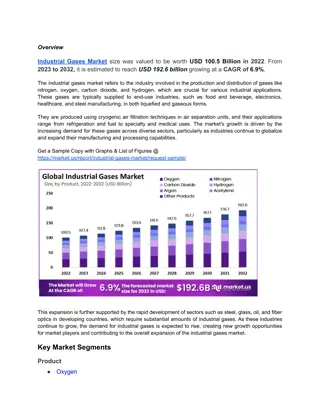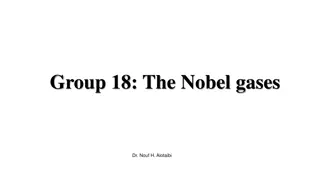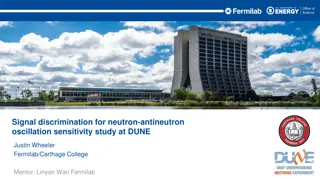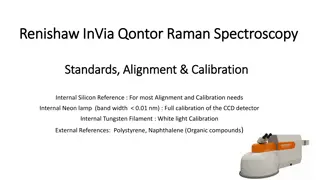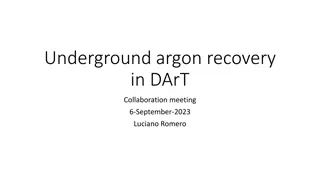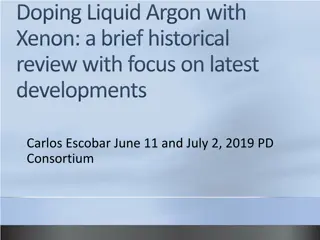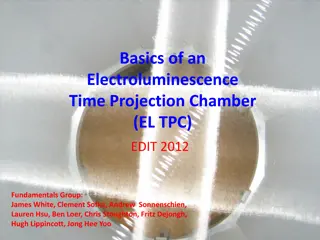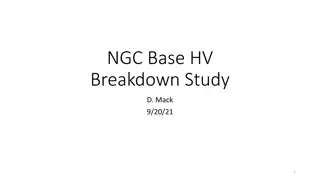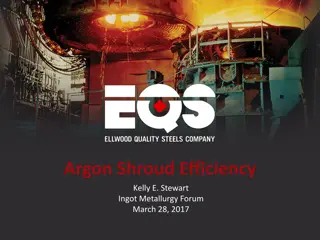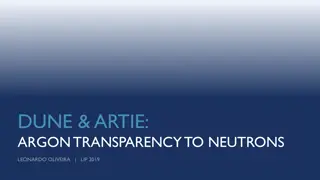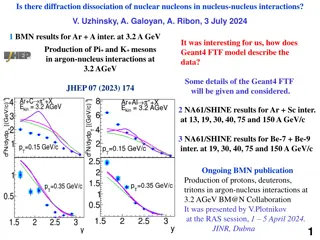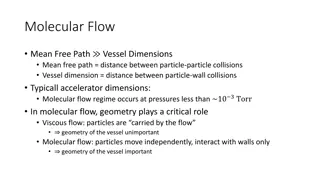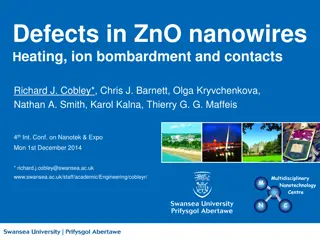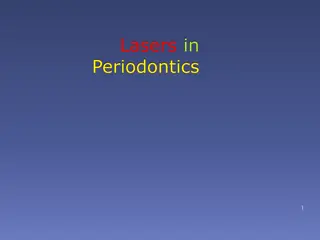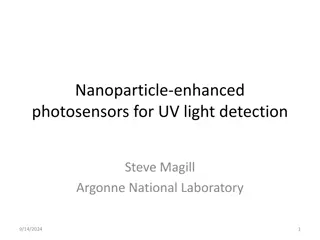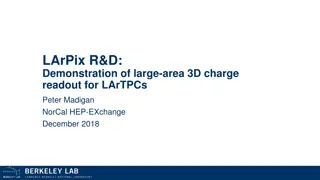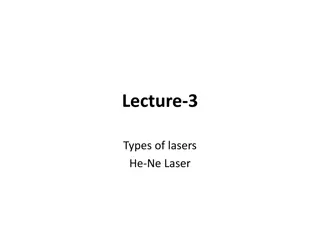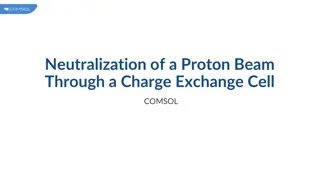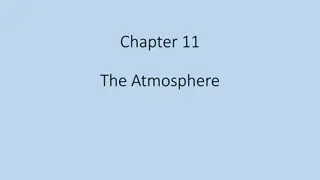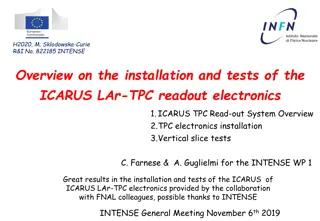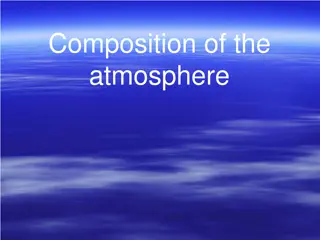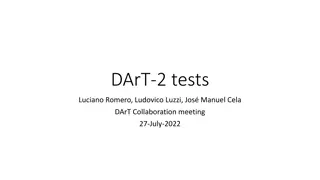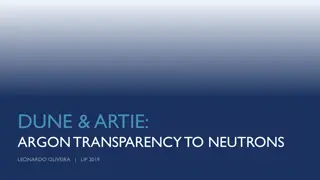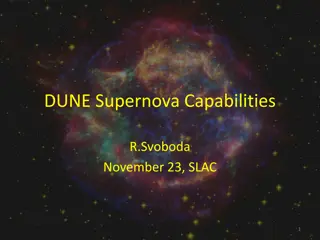Rising Industrialization in Africa Opens New Markets for Industrial Gases
Industrial Gases Market By Product (Oxygen, Nitrogen, Carbon Dioxide, Hydrogen, Argon, Acetylene, and Other Products), By Application, By Distribution, By End-User, By Region and Companies - Industry Segment Outlook, Market Assessment, Competition Sc
0 views • 5 slides
The Noble Gases: Properties, Sources, and Uses
The noble gases, including helium, neon, argon, krypton, xenon, radon, and Oganesson, are characterized by their low reactivity due to a complete electron configuration. They have diverse applications, such as forming inert atmospheres, medical treatments, and lighting technologies. Naturally occurr
0 views • 16 slides
Neutron-Antineutron Oscillation Sensitivity Study at DUNE
The study at DUNE focuses on discriminating signals for neutron-antineutron oscillation sensitivity, aiming to measure CP violation and explore BSM physics. DUNE uses a Liquid Argon Time Projection Chamber to search for antineutron annihilation in nuclei, branching ratios, and interaction products s
0 views • 10 slides
Laboratory for Teaching Laser and Atomic Physics at AAPT Conference
Explore the laboratory curriculum for teaching laser and atomic physics developed by Joseph E. Wiest at West Virginia Wesleyan College. The course encompasses electro-optics, quantum models, optics concepts, laser operations, and experimental objectives. Discover the history and applications of vari
0 views • 41 slides
Renishaw InVia Qontor Raman Spectroscopy Standards and Alignment Procedures
Renishaw InVia Qontor Raman Spectroscopy system features various calibration standards and alignment procedures such as using internal silicon reference, neon lamp calibration, and external references like polystyrene and naphthalene. The system also includes auto-align routines for maintaining opti
0 views • 6 slides
Argon Recovery and Measurement in DArT Collaboration Meeting Overview
This document discusses the process of measuring and recovering underground argon in the context of a DArT Collaboration Meeting. It includes information about the underground argon in LSC, the DArT gas system presentation, the procedure to empty DArT, hardware issues related to the connection to ga
0 views • 11 slides
Advancements in Doping Liquid Argon with Xenon: Historical Overview
Delve into the historical review and latest developments of doping liquid argon with xenon, aiming to shift light wavelengths for improved visibility in TPC volumes. Key questions address the effect on scintillation components, stability of xenon doping, and potential ice cluster formation. Early st
0 views • 27 slides
Understanding Electroluminescence Time Projection Chamber (EL TPC) Physics
Delve into the fundamentals of Electroluminescence Time Projection Chambers (EL TPCs) through concepts like electron drift, scintillation mechanisms in noble gases, and charge yield estimation. Explore the workings of EL TPC prototypes, such as ZEPLIN II/III and DarkSide, for applications like react
0 views • 23 slides
Analysis of NGC Base HV Breakdown Study and Voltage Divider Diagram
The NGC Base HV breakdown study identifies potential workmanship issues affecting sparking in a 60% Neon-40% Argon atmosphere near +2000V. Recommendations include checking and redoing signal and ground attachments, along with hi-potting HV cables to 3000V. Switching to 60% Neon/40% Argon prompts a c
1 views • 14 slides
Understanding Argon Shrouding for Metallurgy Applications
Argon shrouding is a technique used in metallurgy to create a protective environment around molten steel during the teeming process. This helps prevent re-oxidation, reduce oxygen and nitrogen in the final product, and avoid steel build-up. The effectiveness of shrouding depends on factors like shro
0 views • 16 slides
Exploring Neutrons and Argon in the DUNE and ARTIE Experiments
Detailed overview of experiments like DUNE and ARTIE focusing on the use of liquid argon time projection chambers for studying neutron interactions. Discussions include Pulsed Neutron Source calibration, scattering length measurements, ARTIE setup for resonant transport interactions, and current sim
2 views • 10 slides
Neutrino Interactions with Liquid Argon at DUNE Near Detector Complex
The Deep Underground Neutrino Experiment (DUNE) aims to study neutrino oscillations using high-precision measurements with detectors like the Near Detector complex located downstream of the neutrino beam. Components such as ND-LAr and SAND play crucial roles in scanning energy spectra. SAND, a perma
0 views • 16 slides
Understanding Diffraction Processes and Meson Production in Nuclear Interactions
Exploration of diffraction dissociation of nuclear nucleons in nucleus-nucleus interactions using Geant4 FTF model and NA61/SHINE results for various nucleus combinations. Insights into meson production in argon-nucleus interactions at different energies and the impact of models like DCM/AGT, UrQMD,
0 views • 17 slides
Understanding Molecular Flow in Vacuum Systems
Molecular flow in vacuum systems occurs at low pressures where particles move independently, interacting mainly with the vessel's geometry. Tools like MolFlow+ and simulations help analyze pressure profiles and validate system designs. Geometry, outgassing, and pumping speeds are critical factors im
0 views • 11 slides
Studies on Defects in ZnO Nanowires and Their Impact on Properties
In this research, various aspects of defects in ZnO nanowires are explored, including their formation through heating and ion bombardment, as well as the role of contacts. The investigation delves into the growth, control, and motivation of defects, showcasing the effects of processes like argon bom
0 views • 8 slides
Advancements in Pixel Readout R&D for Large Liquid Argon Time-Projection Chambers
Explore the latest developments in pixel readout research and development for large liquid argon time-projection chambers (LArTPCs) presented by Dan Dwyer at the CYGNUS Collaboration Meeting. Learn about signal characteristics, wire signal ambiguity, challenges in true 3D readout, and the innovative
0 views • 13 slides
Understanding Lasers in Periodontics: A Comprehensive Overview
Lasers play a significant role in periodontics, offering precise treatment with minimal discomfort. The technology involves light amplification, stimulation of photons, emission processes, and properties of laser light. Classification of lasers based on active medium types is explored, along with sp
0 views • 30 slides
Advances in Nanoparticle-Enhanced Photosensors for UV Light Detection and Quantum Confinement Research
Nanoparticle-enhanced photosensors are being developed by Steve Magill at Argonne National Laboratory for UV light detection, utilizing quantum confinement to enhance electronic and optical properties. Quantum confinement creates discrete energy levels in nanoparticles smaller than the electron wave
0 views • 30 slides
Advancements in Large-Area 3D Charge Readout for LArTPCs
Demonstrations featuring large-area 3D charge readout for Liquid Argon Time Projection Chambers (LArTPCs) were showcased by Peter Madigan at NorCal HEP-EXchange in December 2018. The challenges of readout in high-rate environments were discussed, along with the potential of pixelated TPCs in 3D LArT
0 views • 13 slides
Overview of Helium-Neon Laser Technology
Helium-neon lasers are widely used in various industries and scientific settings. They are classified based on active materials, wavelengths, and operational modes. The He-Ne laser, invented in 1961, operates at a red wavelength of 6328nm. Its construction involves a mixture of helium and neon gases
0 views • 12 slides
Understanding Neutralization of Proton Beam Using Charge Exchange Cell in COMSOL
In various applications, collisions of neutral particle beams with target materials play a crucial role. This process involves neutralizing high-velocity proton beams by passing them through a charge exchange cell filled with neutral gas, such as argon. The cell allows protons to capture electrons f
0 views • 17 slides
Understanding Earth's Atmosphere Composition and Layers
Earth's atmosphere is primarily composed of nitrogen and oxygen, with other gases like argon, CO2, and water vapor making up the remaining percentage. While the levels of nitrogen and oxygen remain constant, variable gases like water vapor fluctuate based on location and time. CO2 levels have been i
0 views • 53 slides
Overview of ICARUS LAr-TPC Installation and Testing
Detailed overview of the installation and testing procedures for the ICARUS Liquid Argon Time Projection Chamber (LAr-TPC) readout electronics. The system comprises front-end amplifiers, ADC systems, optical links for data transmission, mini-crates housing the electronics boards, power supplies, and
0 views • 6 slides
Composition of the atmosphere
The atmosphere is a mixture of gases, with 78% nitrogen, 21% oxygen, and the remaining 1% comprising various gases like carbon dioxide, helium, argon, neon, and hydrogen. Water vapor, an essential component, influences humidity and plays a crucial role in weather patterns. Through gravity, the atmos
0 views • 7 slides
DArT-2 Tests and Experiments Overview
The DArT-2 tests involve twin experiments - DArT-2 and DArT-Test, focusing on ensuring the performance of DArT-2 in studying underground argon. Various tests like electronic tests of the PDM and vacuum tests are conducted to guarantee proper operation. Challenges with vacuum sealing and solutions li
0 views • 8 slides
Research on Liquid Argon for Neutron Detection in High-Energy Physics Experiments
Illustrations and descriptions of the DUNE project, Liquid-Argon Time Projection Chambers, Pulsed Neutron Source calibration, and the ARTIE experiment investigating Argon's scattering length. Current work involves simulations for energy reconstruction using Geant4. These experiments aim to improve p
0 views • 9 slides
Advancements in Liquid Argon Time Projection Chamber Technology
Explore the capabilities of the DUNE project with a focus on the Far Detector conceptual design, operating principles of Single Phase LAr TPC, and advantages/disadvantages of liquid argon as a detection medium. The innovative technology allows for precise tracking at the sub-1mm level and facilitate
0 views • 36 slides
Best Custom Neon Sign in Kedron
Are you looking for the Best Custom Neon Sign in Kedron? Then contact Cue Signs. They specialise in creating affordable, high-quality signs for weddings, events, homes, and more. Their custom neon signs are perfect for adding a unique touch to any oc
0 views • 6 slides
